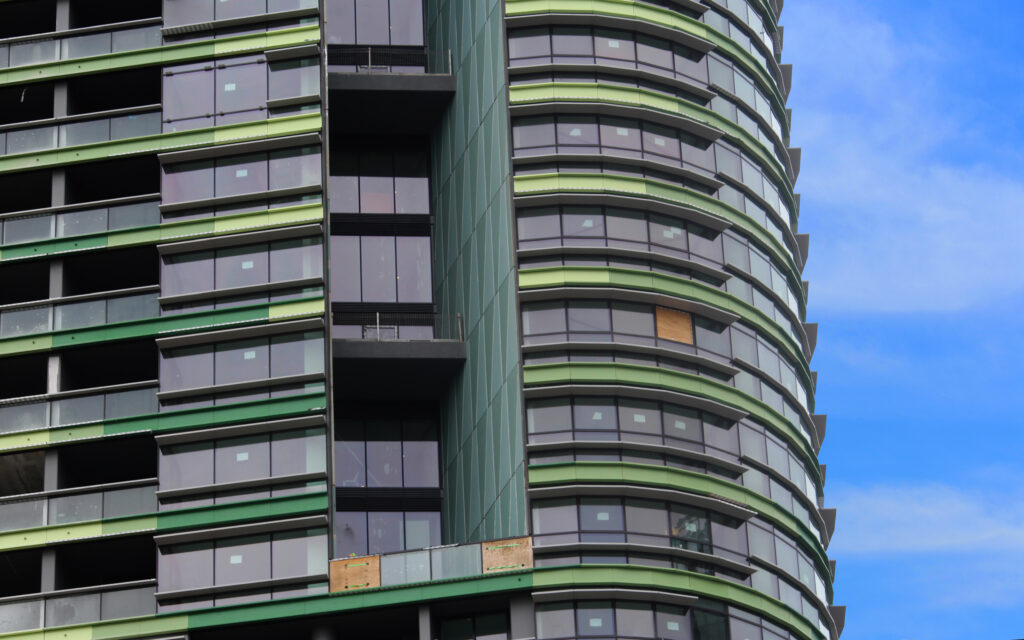
The building construction disasters of Opal Towers and Mascot Towers in Sydney were only the tip of a very large iceberg . There are cases of a high-rise residential buildings not older than 8 years old requiring all 600 bathrooms to be replaced. That is not unusual in Sydney. Nor is the fact they are not getting the publicity they deserve.
The exposure in recent years of the shortcoming in the self-certify residential building industry prompted NSW Building Commissioner David Chandler to tell an NSW Parliamentary Inquiry: “Our industry is overly self-facing, and it has an unsustainable culture of risk-aversity and ‘What’s in it for me?’ This culture has too often become defensive and adverse to accountability.”
Damming stuff. No wonder buyers are thinking twice before purchasing newly constructed apartments.
The NSW Government response has in part been the introduction of the Design and Building Practitioners Act 2020 (NSW) (the Act).[1] This Act and its accompanying Regulation impose some significant accountability to those in the residential building and construction industry.
Improvements include:
- People carrying out “building work” on residential apartments owing a duty to exercise reasonable care in avoiding economic loss caused by defective building works. Previously there was no duty of care between a builder and an Owners Corporation or strata unit owner. The imposition of this duty of care will give a Owners Corporation and/or a strata unit owner’s rights against engineers, builders, designers, architects and the like for defective works.;
- This duty applies retrospectively for losses that become apparent 10 years immediately prior to the 11 June 2020 introduction! This is quite a big step and retrospective legislation is never introduced lightly for fear of the unfair consequences it has on those acting on the understanding of what the law is at the time only -to later discover the law they relied upon has changed to their detriment;
- A duty of care is only as effective as the insurance behind it, however. A breach of a duty by a bankrupt builder is of little recourse to a disaffected strata unit owner. The Regulations make it compulsory by July 2023 that design and building practitioners have “adequate” professional indemnity insurance to indemnify aggrieved unit holders; and
- A new registration regime requiring designers, architects, engineers, builders etc. to become registered and submit design and compliance declarations that the designs and works proposed are compliant with the Building Code of Australia before the works can commence or be varied. This registration regime commences soon – 1 July 2022 – so design and building practitioners should take note. The failure to make such a declaration will delay the progress of a development, attract fines and if intentionally false lead to even more severe consequences;
Conclusion
Those considering purchasing newly constructed strata units can begin to feel a little more comfortable with the quality of the unit they purchase. Developers, Builders and Design Practitioners need to beware of the extra obligations including the lodgment of an Expected Completion Notice with the Department of Customer Service, insurance, registration and administrative costs associated with the legislation to ensure they don’t run afoul of the regulator.
These changes are not before time!
This post is only intended to provide commentary and general information. They are for reference terms only and not legal advice. See Terms of Use of this website. Formal legal advice should be obtained before acting on this commentary.
[1][1] See also Residential Apartment Buildings (Compliance and Enforcement Powers) Act 2020 (NSW) – This legislation provides the Department of Customer Service with powers to manage building developments during their construction. It reduces the chances of defective buildings being on-sold to consumers.


